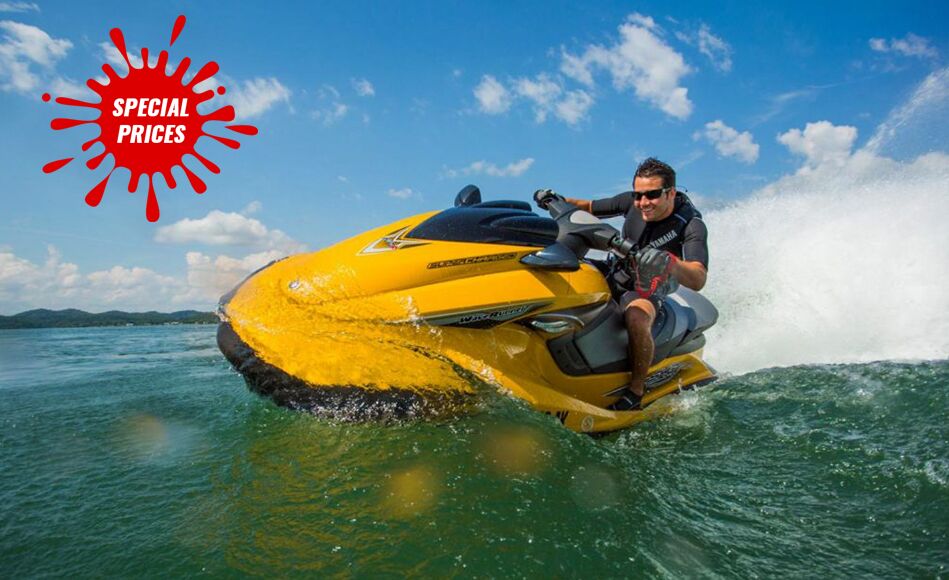Jetski riding offers an electrifying experience, allowing riders to skim across the water’s surface, feeling the rush of wind and water beneath them. For beginners, this aquatic adventure might seem a bit daunting at first, but with the right guidance and essential riding techniques, mastering the waves becomes an achievable and exhilarating feat. In this comprehensive guide, brought to you by Doctor Jetski Rentals, we will cover the fundamental jetski riding techniques that every beginner should know to ride confidently and safely.
1. Safety First: Preparing for Your Jetski Adventure
Before hitting the water, prioritizing safety is paramount. At Doctor Jetski Rentals, we always provide thorough instructions to our riders to ensure their safety and the safety of others. Here are some crucial safety measures to follow:
a) Wear Appropriate Safety Gear: Always wear a Coast Guard-approved life jacket that fits you snugly. A life jacket will keep you buoyant in case of an unexpected fall, ensuring your safety during the ride. Additionally, don’t forget to wear goggles or sunglasses to protect your eyes from water spray and the sun’s glare.
b) Understand Jetski Controls: Familiarize yourself with the jetski’s controls before you start. Learn how to accelerate, decelerate, and steer the watercraft effectively. At Doctor Jetski Rentals, we offer beginners’ training sessions to ensure you’re comfortable with the controls before heading out on your adventure.
c) Check the Jetski: Before riding, conduct a quick pre-ride check on the jetski. Make sure it’s in good working condition, check the fuel level, and inspect for any visible damage. If you notice any issues, inform the rental staff immediately for prompt resolution.

2. Getting Started: Mounting and Dismounting the Jetski
Mounting and dismounting the jetski may seem simple, but it’s crucial to do it correctly to avoid any accidents or injuries. Follow these steps:
a) Mounting the Jetski:
- Approach the jetski from the side.
- Place one foot firmly on the footboard.
- Swing your other leg over the seat and sit down gently.
- Position yourself securely, ensuring a stable grip on the handlebars.
b) Dismounting the Jetski:
- Bring the jetski to a complete stop.
- Place both feet on the footboard.
- Stand up carefully, keeping your balance.
- Swing your leg over the seat and step off the jetski.
Always mount and dismount the jetski from the side to minimize the risk of tipping over.
3. Navigating the Waters: Steering Techniques
Steering the jetski is essential for avoiding obstacles, making turns, and staying on course. Here are the primary steering techniques you need to know:
a) Handlebar Control: The handlebars are your main control for steering. To turn left, push the left handlebar grip down, and to turn right, push the right handlebar grip down. Practice gentle turns initially to get a feel for the watercraft’s responsiveness.
b) Weight Shifting: In addition to handlebar control, you can shift your body weight to aid in turning. Leaning slightly in the direction of the turn can enhance the maneuverability of the jetski.
c) Maintain a Steady Speed: When riding, maintain a consistent and steady speed to have better control over the jetski. Sudden changes in speed can lead to instability, especially for beginners.
4. Handling Waves and Rough Waters
Riding jetskis in calm waters is a pleasure, but at times, you may encounter waves and rough waters. Learning to handle these conditions is essential for a safe ride:
a) Approach Waves Head-On: When you encounter waves, approach them head-on rather than riding parallel to them. Riding at an angle to the waves can result in the watercraft tipping over or becoming unstable.
b) Stand Up Slightly: In rough waters, stand up slightly from the seated position to absorb the impact of waves. Keeping your knees slightly bent can help cushion the impact and maintain stability.
c) Avoid Sharp Turns in Rough Waters: In choppy conditions, avoid making sharp turns, as this can lead to loss of control. Stick to gradual turns until the waters calm down.
5. Riding with Confidence: Tips for Gaining Skill and Experience
Becoming a proficient jetski rider takes practice and experience. Here are some additional tips to gain confidence on the water:
a) Take it Slow: As a beginner, don’t rush to attempt high-speed maneuvers or complicated tricks. Focus on mastering the basic techniques first and gradually build your skills.
b) Practice in Calm Waters: Start your jetski adventures in calm and controlled environments, such as lakes or protected bays, before venturing into more challenging waters.
c) Learn from Experienced Riders: Observe experienced jetski riders and learn from their techniques and riding styles. Most riders are happy to share their knowledge and offer helpful tips.
d) Stay Within Your Comfort Zone: Pushing yourself beyond your comfort zone can be beneficial for learning, but always stay within your limits to avoid accidents. If conditions become too challenging, head back to calmer waters.
e) Continue Learning: Consider enrolling in jetski riding classes or workshops to enhance your skills further. Learning from professionals can accelerate your progress and ensure you’re riding safely and responsibly.
Conclusion
Mastering jetski riding techniques is a thrilling journey that offers excitement and joy on the water. By prioritizing safety, understanding the jetski controls, and practicing the essential riding techniques, beginners can ride with confidence and fully immerse themselves in the exhilarating world of jetski adventures. Remember, patience and practice are key to becoming a skilled jetski rider. So, take your time, enjoy the learning process, and make the most of your aquatic adventure with Doctor Jetski Rentals. Happy riding!

